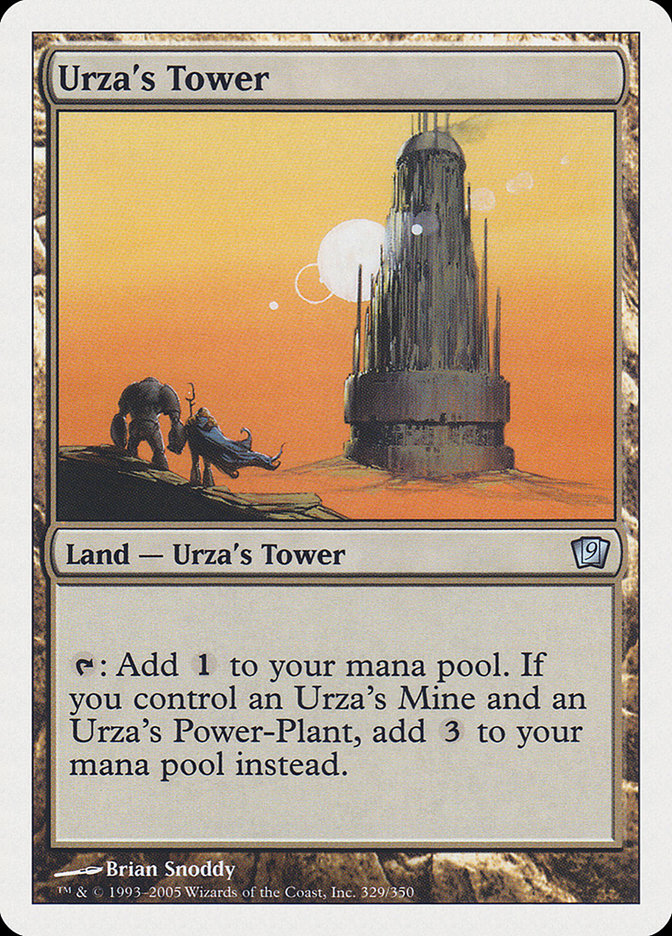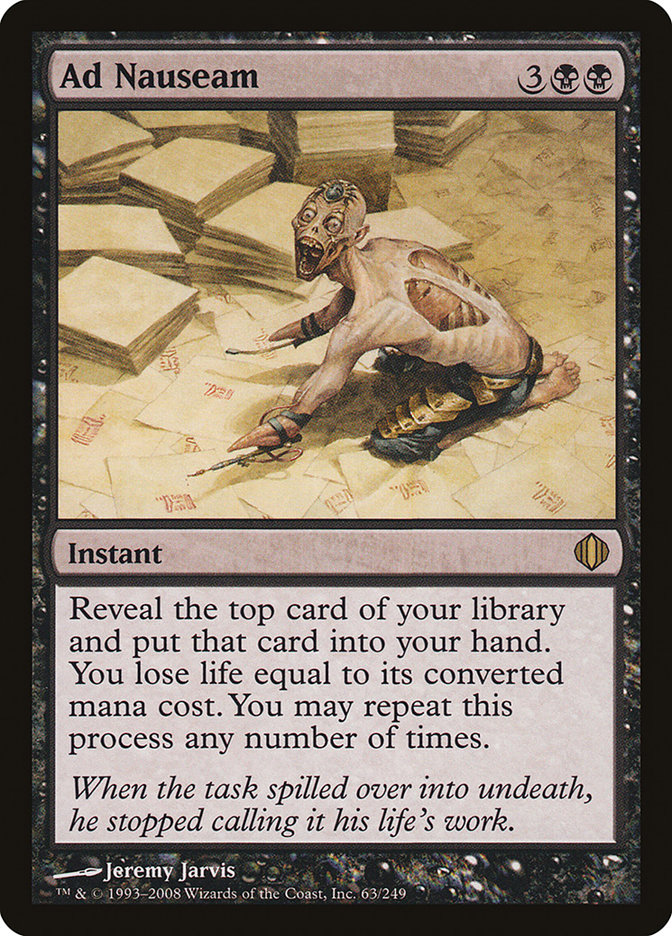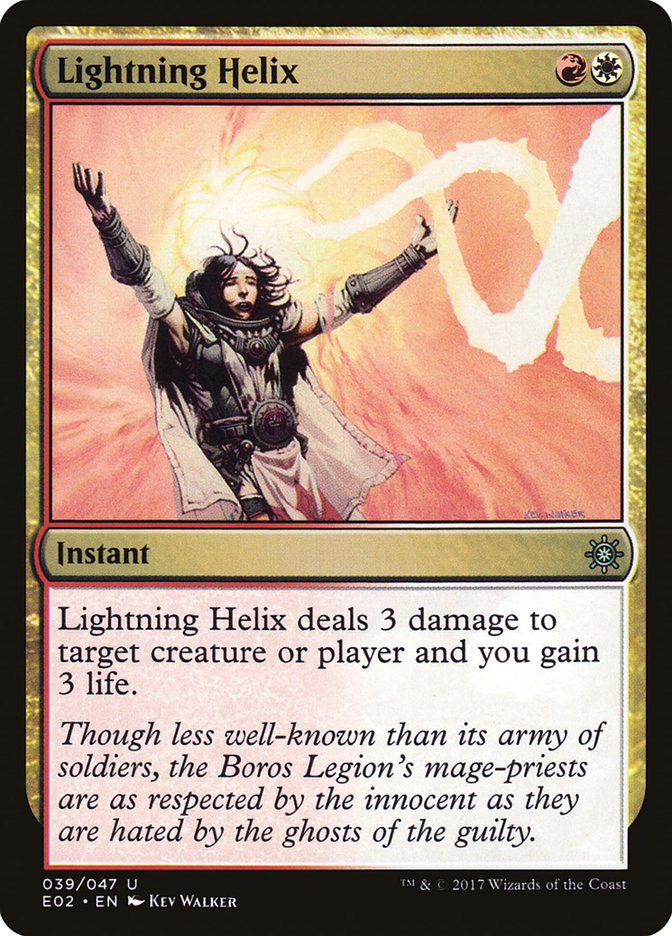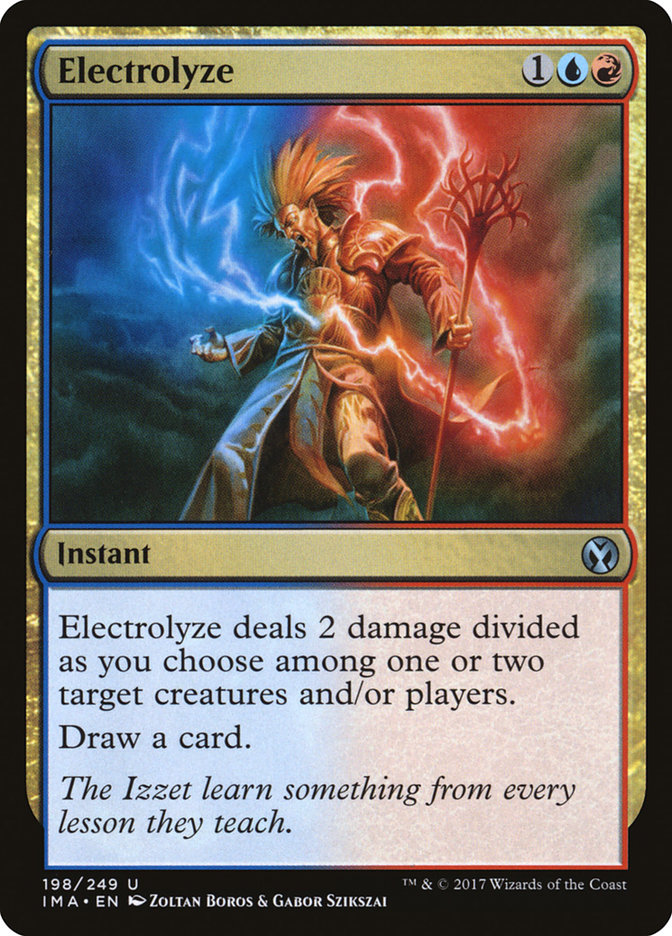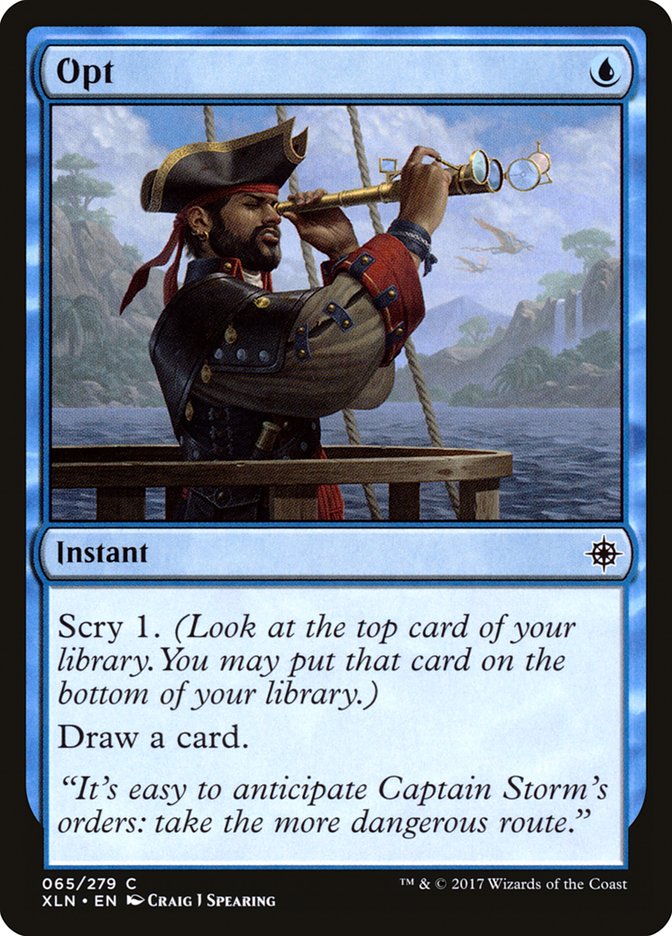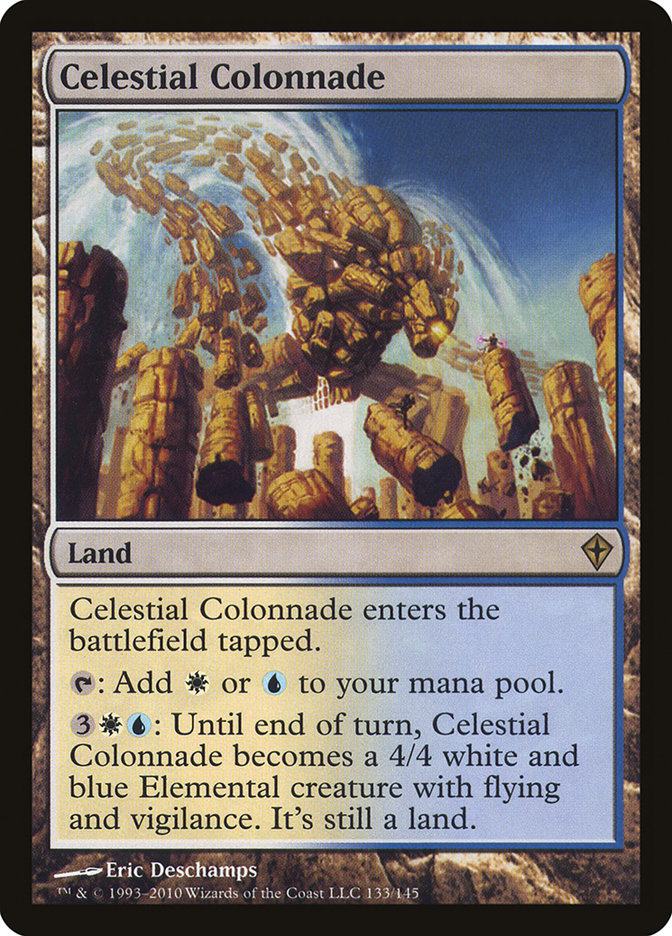Control in Modern still has a long way to go to establish format dominance. The existence of combo decks makes this an especially difficult task, preventing the control player from focusing on the threat of creatures, and requires a complete shift to specific disruption. Packing removal, sweepers, and light countermagic or hand disruption won’t get you too far in the format; although the majority of the room isn’t playing Living End, Ad Nauseam, Scapeshift, Krark-Clan Ironworks, Blue Moon, U/R Gifts Storm, and even Tron variants, avoiding them all is nearly impossible.
When fringe decks in older formats rear their ugly heads, a loss or two can occur for the mighty control mage. It typically isn’t enough to derail their tournament-winning dreams. But in a fifteen-round Modern Grand Prix, expect that number to be significantly larger.
Modern control decks aren’t incapable of defeating these combo and big mana decks, but the matchup percentages cannot be ignored. My heart aches when an opponent leads off with an Urza’s Tower, suspended Lotus Bloom, or a Sleight of Hand on the first turn. The first game for control can always be rough when battling against a combo nemesis, but in Modern it is much direr than it has been elsewhere. The hate cards that are available can be quite potent, but a fifteen-card sideboard doesn’t cut it. Two Stony Silences here, one Rule of Law there, a couple of Surgical Extractions to handle some graveyard shenanigans…but few overlap. If the full sideboard is dedicated to combo hate and the maindeck is centered on a quick clock, then control has its best shot at success in a competitive Modern arena.
Creatures (12)
Lands (24)
Spells (24)

This was the only high-performing control deck last weekend at the Season Two Invitational. Brendan Reginbald had a record of 6-1-1 or better, representing the heroic archetype for all of us. There was another Jeskai Control deck in the Top 8, but the SCG Invitational is a split format. Once upon a time, this structure allowed me to better the competition five times in a row with a beautiful Esper Stoneblade deck with some assistance from Sphinx’s Revelation in Standard.
A beautiful thing.
Brendan’s Jeskai Control deck snagged one of the ten spots displayed as “high-performing” last weekend and I have made it my mission to further propel it to the top tier of competitive decks.
The next Pro Tour is Modern, which initially left me feeling pretty bummed. It’s no secret that my love for Modern is questionable at best, but recent spurts of Jeskai Control success has given quite a few members of the control community hope for the format. There seem to be very few individuals that fall in the middle, meaning you typically either love or hate Modern. I find myself moving to that rare middle ground and have been brewing lists more often out of interest. With Pro Tour Rivals of Ixalan around the corner, that interest has merged with necessity.
I wrote about U/B Control a few weeks ago and I believe it is still a strong option for the format. Today, I want to show you my take on Jeskai Control and explain my card choice differences from Brendan’s Jeskai Control list.
Creatures (10)
Lands (23)
Spells (27)

Brendan’s take on Jeskai Control that led him to the top of the Modern standings last weekend is very similar to my build listed here. We both are taking Jeskai Control lessons from Jon Rosum and Harlan Firer, the pushers of the archetype into the mainstream.
Jeskai Control variants have been around for years, even attempting to add Nahiri, the Harbinger / Emrakul, the Aeons Torn combo, but they haven’t been a consistent force. The archetype has solidified into the Tier 2 position, but the goal of these players, all lovers of control, is to have a representative at the very top.
The reason why Jeskai Control has an edge over the other color combinations is the ability to end the game quickly. The famous Lightning Bolt / Snapcaster Mage / Lightning Bolt series is a way to put tremendous pressure on any foe, regardless of their deck choice. The U/B Control list I have been working on has its moments, tearing hands apart against vulnerable combo decks, but it lacks that game-closing punch that the other colors can offer.
Adding red helps solidify the most aggressive matchups and gives a faster clock against combo decks, but it has a few negatives attached. It feels great to have a ton of burn spells most of the time, except when they cast Scapeshift and one of those burn spells could have been additional disruption.
The constant downfall for control in Modern is “drawing the wrong side of the deck”, but that line of logic has to be eliminated. The list I posted has a consistent gameplan and executes it regularly. This doesn’t mean there aren’t some points where I wish I had a Geist of Saint Traft against my Scapeshift opponent, but that is where the sideboard has to enter to rectify the situation. There are too many situations where Geist of Saint Traft is the worst card in the deck by a significant margin.
Most combo decks do not provide an opportunity to tap out on Turn 3, which is the reason why the ten flash creatures are so important. Operating on the opponent’s turn should be the primary focus of the maindeck and that school of thought has led to promising results through testing online and with my Team Cardhoarder family.
The combo matchups, with Tron included, are still tough to combat with Jeskai Control. The good news is that these tough matchups have improved with the few alterations made. The addition of the fourth Cryptic Command and four copies of Opt has strengthened Snapcaster Mage, making the possible lines of play on an opponent’s turn increase significantly.
There are many times where a main-phase Snapcaster Mage targeting Opt empowers the opponent to make a more aggressive play that could have been prevented. Holding up three mana often implies some form of disruption, forcing an opponent to take a more cautious line. Opt works better with Spell Snare, enabling access to either with a clean Snapcaster Mage on Turn 3. Most of you know I’m a huge supporter of the new cantrip, so give it a shot and see if works wonders for you as well.
Aggressive decks aren’t the only easy matchups out there for Jeskai Control. Cards like Lightning Helix and Electrolyze have clear, detrimental effects on low-curve creature decks and are effective in the life race as well. These dual-purpose cards give Jeskai Control an advantage against any decks that require cheap creatures to operate. Affinity can be plucked apart by the same removal spells that can dispatch a Goblin Electromancer.
Those same removal spells can attack the life total of a Death’s Shadow player, making lethal occur unexcitingly early. There isn’t a Death’s Shadow player that looks forward to playing against Jeskai Control due to the ability to burst-damage them out of the game. Nine life can vanish within an end step, and that provides an avenue to victory that control rarely enjoys.
Since the red damage spells all hit creatures, Jeskai Control is favored against combo decks that require creatures to win. Collected Company decks wish to avoid the onslaught of cheap removal that these Jeskai Control decks amass. The newest creature-based combo deck that pays five to Splinter Twin you out has a hard time with a Lightning Bolt. Although Deceiver Exarch has four toughness, Kiki-Jiki, Mirror Breaker does not.
I even tested my old Protean Hulk Combo deck out, but found that a single Path to Exile ends the dream and begins the nightmare. Creature-based combo decks are enjoyable to play against because the red section of the deck doesn’t feel as dead as it could be.
Lands (18)
Spells (42)

The final series of matchups that need to be addressed are the “best decks” of the format. The rise of Lantern Control has prompted me to re-enlist the help of Stony Silence, which has always been a favorite hate card of mine. It hits Tron variants, Ad Nauseam, Krark-Clan Ironworks, Affinity, and now Lantern Control. It’s not one of those easy hate cards to defeat, either, requiring a timely Thoughtseize or an Abrupt Decay.
The first game is somewhat up in the air against Lantern Control. You have to summon enough direct damage prior to their artifact shield assembly. This version of the deck is more resilient to Ensnaring Bridge, since Geist of Saint Traft is replaced by a fourth Cryptic Command and additional digging. The sideboard is also more potent against these draft commons, adding an additional Negate and the aforementioned Stony Silence.
Storm is still a fairly tough matchup and represents one of the challenges control has in Modern to become top-tier. If I had five more sideboard slots, I could increase the amount of Rule of Laws and call it a day. The one copy exists here because Storm is such a huge part of the metagame and it’s incredibly effective at combating it.
Rule of Law is the definition of narrow and only comes in against for this matchup, but the six draw spells make it rise to the top fairly often. The rest of the sideboard helps, being able to hit their graveyard and counter more spells at a cheaper cost. Casting spells on their turn is vital, because death by Storm can happen abruptly. This matchup is one of the main reasons why Geist of Saint Traft is weaker than Vendilion Clique at this point.
The other Tier 1 decks are effectively handled by Jeskai Control. Death’s Shadow’s self-destruction makes it easy for Celestial Colonnade strategies to save the day. Humans is the new hotness in the Modern world, but you can diversify removal well enough to destroy the army of little creatures. Meddling Mage and Kitesail Freebooter don’t quite cut it against the array of destruction that this control deck utilizes. I’m not saying that these decks are pushovers, but they are definitely ones where we win more often than lose.
The Champion!
I’d like to end on an even more exciting note than Control’s War for Modern Relevancy. My good friend, Eli Kassis, sliced through the competition and emerged victorious last weekend to become the Season Two Invitational winner! Over many years, Eli and I have enjoyed the adventures of traveling for competitive Magic together. He’s one of the best players in the world, and has been for years. That same speech Mike Sigrist gave me, about playing the best deck, I gave him. He played brews tournament after tournament, year after year, and had medium results like I had. Once he dropped the toolbox, picked the best Constructed decks up, and went to work, he’s dominated nearly every tournament he participates in.
He’s a proud member of Team Cardhoarder with me and will also be on my squad in the team tournaments to come. I think I got the better end of that deal! Congrats again, my friend, and keep on crushing it!



